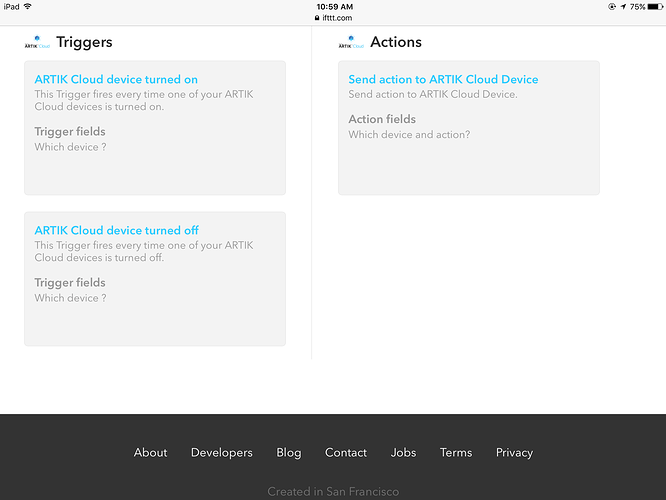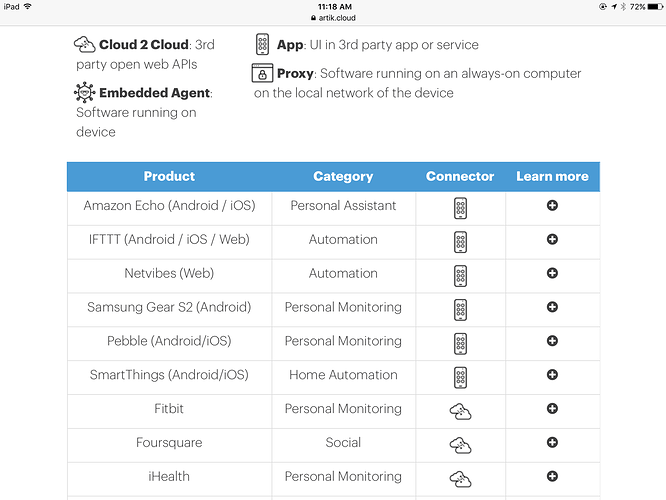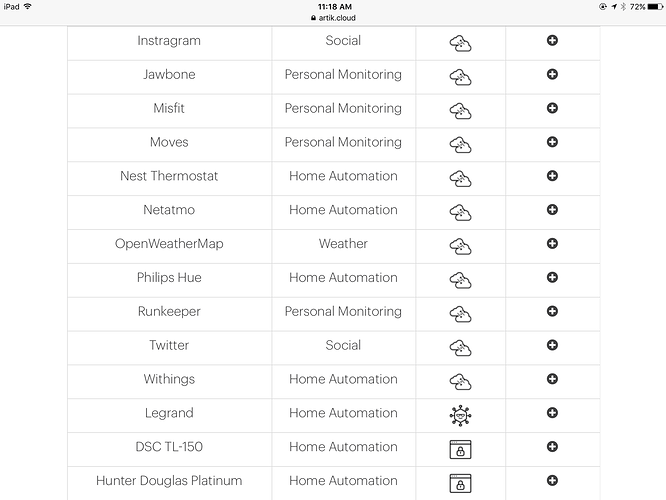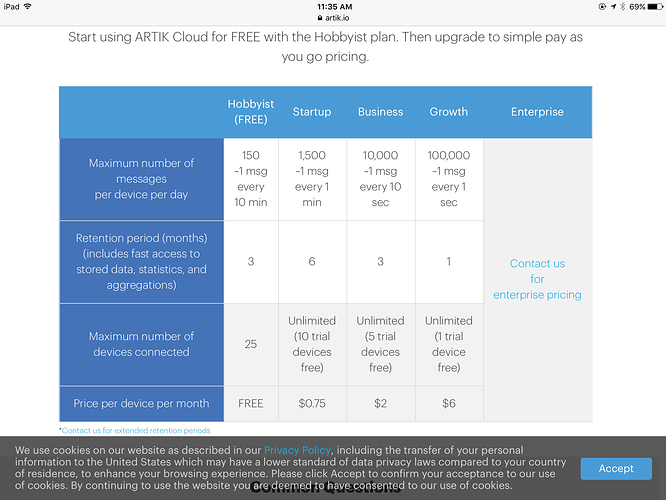This is a really big deal, but it’s super technical, so it hasn’t gotten much press yet.
Samsung has had a project for several years (since before the acquisition of SmartThings) to create a Data cloud that would allow for massive real-time transmission of data between third-party services and devices. First conceptualized for health and medical devices, it quickly became obvious that it would also be useful for IOT projects. Samsung has been using it for their Samsung health systems for a while. It was originally called SAMIio, then later part of it was renamed the “SmartThings open cloud” even though it had nothing to do with the SmartThings hub or the cloud architecture that supports that hub. ( Samsung now owns the SmartThings name, they can do what they want with it.)
Last year, Samsung announced Artik modules, which are hardware pieces that can be included in third-party hardware and do a number of things, one of which was to enable communication with the SAMIio cloud.
Now they have folded the cloud services and the hardware modules into one project called Artik. And renamed the SAMIio cloud as the Artik cloud. But know that just as before, you don’t have to have an Artik hardware module to talk to the Artik cloud. Even an android app can do it. 
They’ve also released a bunch of new software modules, and added an IFTTT channel.
One of those software modules is a connector to a Samsung hosted Artik skill for Alexa. So now you have near instant ability to add echo compatibility to almost any device that you can connect to the Artik cloud. Like I said, a big deal, but very technical.
Anyway, I’m impressed with the approach, which is flexible and open to third-party developers. Definitely worth taking a look at if you are a maker type person or a serious programmer. 
I don’t know who on the SmartThings team could answer further questions about Artik and SmartThings , so I’m tagging @ben . But it’s very cool stuff, and I think definitely fits the SmartThings’ philosophy of enabling integration with as many devices as possible. The IFTTT channel alone opens up possibilities with SmartThings immediately.

 but you do a great job of giving the history. Essentially a year ago we thought that the SAMI cloud would be brought closer into the fold and we even announced a rename: SmartThings Open Cloud. It looks like parts of that strategy have shifted but what hasn’t is our commitment to the two technologies working closer and closer. Should be fun to see how it goes.
but you do a great job of giving the history. Essentially a year ago we thought that the SAMI cloud would be brought closer into the fold and we even announced a rename: SmartThings Open Cloud. It looks like parts of that strategy have shifted but what hasn’t is our commitment to the two technologies working closer and closer. Should be fun to see how it goes.










